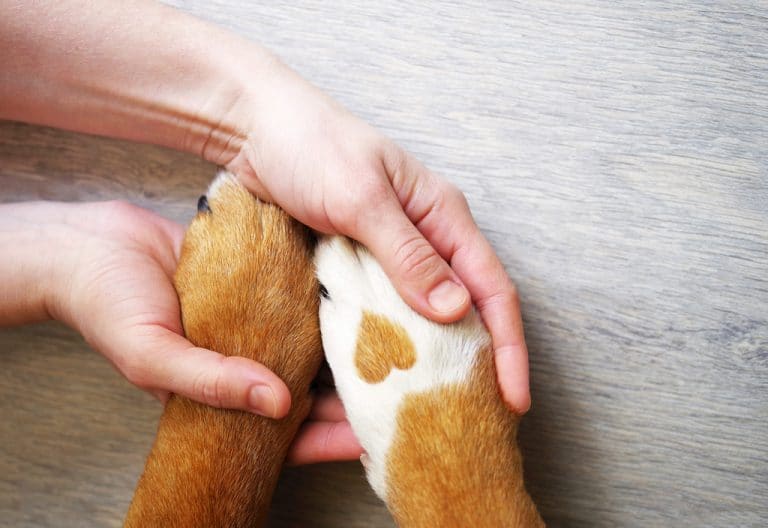Swimming, hiking, and many more activities… Not only you but our four-legged friends are also looking forward to the summer!
Do you know that you are putting your pet’s health on risk when the weather is too hot?
What is a heat stroke?
Heatstroke, also known as sunstroke, is one of the severe heat illness that results in a body temperature greater than the normal physiological range (or hyperthermia) (1). There are a lot of conditions that result in hyperthermia such as heatstroke, heavy exercise, some medicine and even by poisoning.
Normally our body tries to keep its normal temperature constant despite the external environment. That’s why we tend to cool our body by sweating in hot weather or make it warm by shivering in cold weather. These take place entirely at our request. However, dogs can not cool off their bodies like us, but with panting.
Every year more and more dogs are dying after being left in cars. Within 10 minutes the temperature inside your car can reach the temperature that causes a heat stroke. It is the case where the body cannot compensate the effects of the excessive heat by its conventional heat-dissipating mechanism (2).
How does the heatstroke affect my dog and cat?
High temperature is not only harmful to animals, but also to humans because it affects the enzymes in our body directly. While these enzymes work well at the normal body temperature, their function decrease at low and high temperatures.
Normal body temperatures:
| Species | Body Temperature |
| Dog | 37,5℃- 39,0℃ |
| Cat | 38,1℃- 39,2℃ |
For instance, when the body temperature falls below 34℃, the animals cannot regulate their body temperature. Between 27℃-29℃ degrees may cause cardiac problems. At body temperature above 45℃ may cause irreversible fatal injuries in the brain and other organs.
Risk factors
Heatstroke can affect cats and dogs of all ages and races. Especially high temperature and high humidity increase the risk. Evaporation, which is the mechanism necessary to reduce body temperature, is more difficult with humid weather.
Risk groups include:
- Geriatric dogs
- Young dogs ( < 1 Year-old)
- Obese animals
- Animals with heart or lung diseases
- Breeds with long and dense hair
- Brachycephalic dogs

Brachycephalic* dogs and cat breeds are affected more by the heat. The reason for this is that their noses are short, the nostrils are narrow, elongated soft palate. With this condition, it is hard to regulate body temperature. In these breeds, hyperthermia can occur even at normal temperatures.
*Some of the brachycephalic breeds are; Bulldogs (French, English), Pug, Boxer, Shih Tzu…
What are the symptoms of heatstroke?
Your dog or cat may have different tolerance to high temperatures. In cats’ heatstroke is uncommon.
However, if your pet’s body temperature exceeds 41℃, you may see some symptoms. These are:
- Fast breathing
- Increased salivation
- Increased heartbeat
- The red color of pale gums
- Cyanosis: the purple color of mucous membranes
- Vomiting (may contain blood)
- Unconsciousness
- Disorientation
- Symptoms due to organ failure: eg. reduction or absence of urinary output due to renal failure
- Bloody stool
- Neurological symptoms related to brain edema; seizure
- Coma
What can you do?
Early diagnosis is important in heat stroke so that you take your dog to the veterinarian as soon as possible. Even with the best treatment, heatstroke can be fatal.
- Keep in mind that your pet needs intensive care and the duration of treatment may take 2-3 days.
- Before going to the veterinarian, you can reduce the body temperature by wetting your pet’s fur with water. Make sure the water is NOT too cold! Too cold applications will cause heat shrinkage from the body as it causes the narrowing of the vessels.
- You can soak a towel and cool the inside of your pet’s paws, the back of its neck and the inner faces of its legs.
- Restrict oral food intake if your pet is unconscious. Make sure that your dog has access to freshwater.
What kind of treatment process is waiting for my pet?
There is no specific drug that treats hyperthermia. The treatment of your pet’s symptoms will also change. Your veterinarian will continue to cool down your pet’s body temperature. Besides oxygen and fluid treatment, treatment will be applied according to damage in organs such as the brain, kidney, stomach, and intestine.
The effect of global warming: The fact that the summer months are even hotter than before and it is threatening all living creatures on earth. In the summer of 2003, a heatwave in Europe is thought to have killed 73,000 people (3). High temperatures affect not only humans but our four-legged friends. AND it is our responsibility to save their lives.
References:
- https://en.wikipedia.org/wiki/Heat_stroke
- https://www.avma.org/public/PetCare/Pages/Hot-Cars-and-Loose-Pets.aspx
- https://en.wikipedia.org/wiki/2003_European_heat_wave



